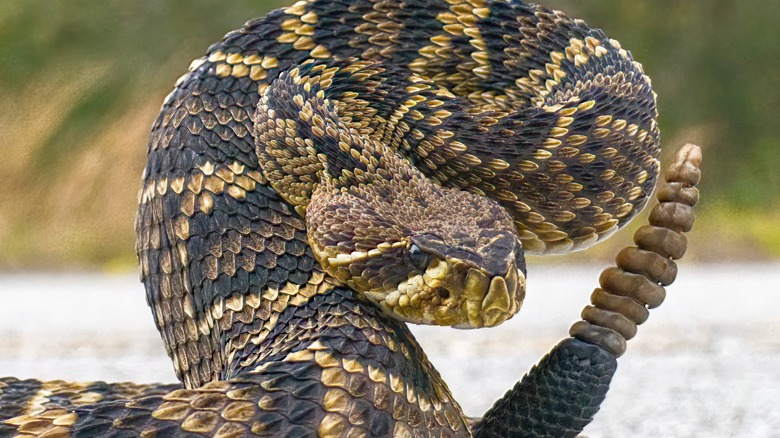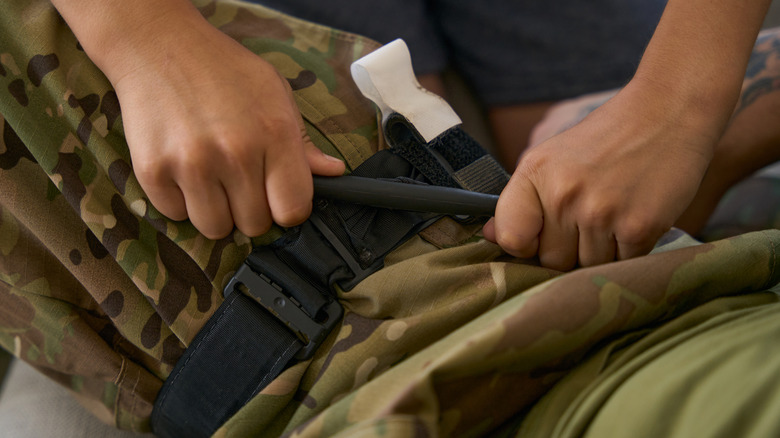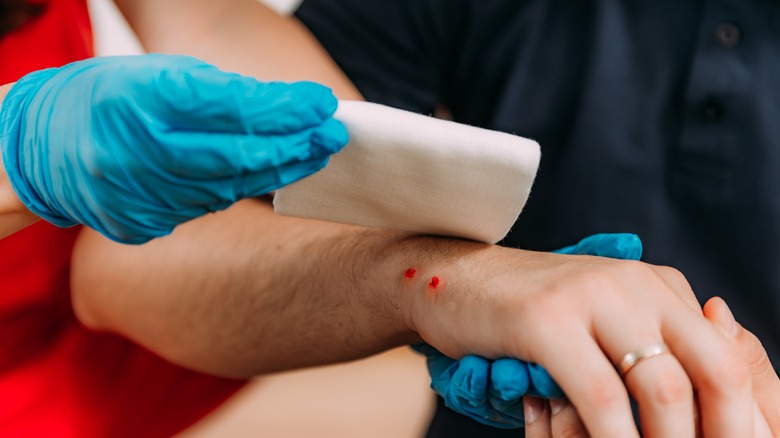The Mistake That Could Cost You A Limb After A Rattlesnake Bite
Almost everyone who ventures outdoors realizes rattlesnakes are one of the most dangerous types of snakes in the world. They certainly qualify as creatures to beware of when adventuring in just about any portion of North America as various subspecies of rattlesnakes are found in virtually the entire lower 48 states in the U.S., as well as portions of Canada and throughout Mexico. With that in mind, it is only natural to want to know what to do if you encounter a rattlesnake hiking, camping, or otherwise spending time outdoors.
Of even bigger concern for most people is what to do if they are bitten by a rattlesnake. When it comes to addressing such an emergency situation, it is equally important to know what not to do. Part of the issue with that is some advice for dealing with snake bites that was once promoted among the outdoor community has now changed. For instance, it was once commonly thought one of the best remedies was to suck out snake venom from a wound. Today, it is roundly accepted that when applying first aid, you should never suck the venom out of a snake bite. However, despite efforts to educate the public on proper first aid for snake bites, many previously accepted treatments –- whether rooted in medical fact or folk medicine -– persist. At least one of those treatments is a mistake that could cost you a limb after a rattlesnake bite.
Never apply a tourniquet to a snake bite
A bite from a rattlesnake, or any venomous snake, is certainly an urgent emergency. If not quickly and properly attended to, venomous snake bites can result in very serious injury, nerve damage, limb amputation, paralysis, and possibly death. So, there is an urgent need to quickly apply first aid to a snake bite victim. However, not everyone knows the proper steps to take to attend to a snake bite. In this instance, most people begin to take steps that they think make sense. Unfortunately, some of these treatments may actually be a huge mistake that actually makes the situation worse.
Applying a tourniquet to a snake bite is one such example. Most everyone knows the purpose of a tourniquet is to slow or stop the flow of blood. Tourniquets are included in most first aid kits and are considered a critical piece of emergency gear. Given that venom travels throughout the bloodstream of a snake bite victim, many times people reason that they need to stop the flow of blood to keep the venom from spreading. But, according to advice from John Hopkins Medicine, this actually increases the amount of damage the venom inflicts as it isolates the venom in one area for a elongated period of time and prevents the flow of blood to the tissue. As a result, it is much more likely that an extremity would be amputated if a tourniquet is applied.
Proper first aid for a snake bite
A much better option to accidentally making the situation worse is purposely knowing the proper first aid for a snake bite. Most medical facilities, including John Hopkins, agree on the main steps to take. First and foremost, everyone -– victim and responders -– must remain calm. Immediately call 9-1-1, a park ranger office, or other applicable emergency responders. It is important to get medical care as quickly as possible. If you are in an area where medical personnel can respond, you should remain where you are and make sure the proper first aid is applied while waiting on emergency personnel. If not, you will need to make your way to a trail head, vehicle, or other area to be able to reach medical services.
While waiting for emergency personnel to arrive, or before making the trek to a safe point, wash the wound with water or soap and water if possible. Cover the wound with a moist wrapping or bandage. Immediately remove any jewelry or clothing that could become restrictive or stuck once the extremity begins to swell. Throughout the process, monitor the victim's breathing and heart rate and watch for any signs of shock. Additionally, if possible, it is suggested to draw a circle around the bite area and make note of the time the bite happened, along with the time any noticeable symptoms began. Again, do not apply ice or a tourniquet and do not attempt to suck out any venom.


